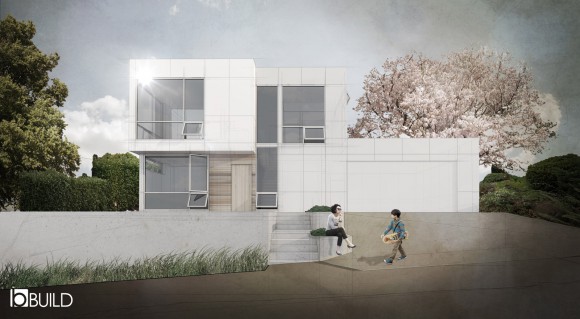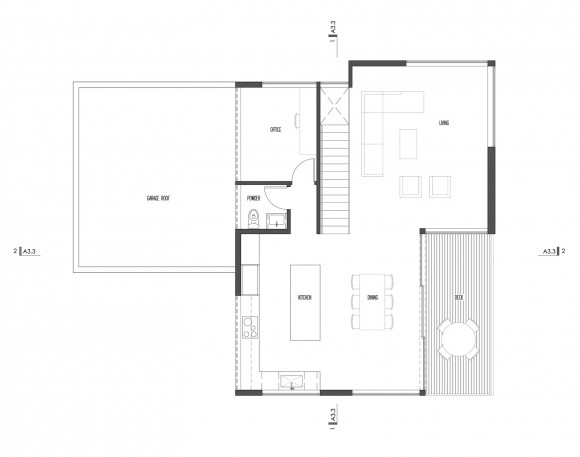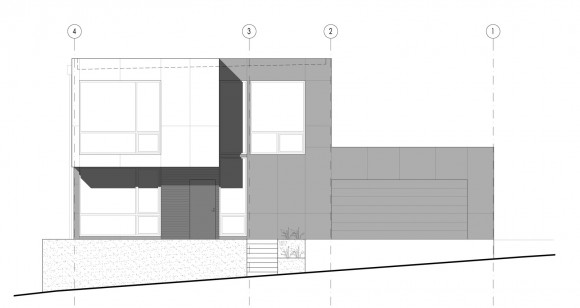
If you follow the BUILD Blog you know that our design methods are significantly influenced by our studies and continuing travels in Scandinavia. The Danish study abroad experience was instrumental to our understanding of design, and the ongoing travels in Scandinavia continue to inform our architectural thinking as well as our lifestyle choices. As inspirational as these factors are, however, they are not without obstacle. One of the primary challenges we find is implementing Scandinavian design concepts that simply have no translation in the English language or in American culture. The concept of lagom is precisely that.
The Lexin Swedish-English dictionary (via Wikipedia) makes a worthy attempt to define lagom:
“Enough, sufficient, adequate, just right”. Lagom is also widely translated as “in moderation”, “in balance”, “perfect-simple,” and “suitable” (in matter of amounts). Whereas words like “sufficient” and “average” suggest some degree of abstinence, scarcity, or failure, lagom carries the connotation of appropriateness, although not necessarily perfection. The archetypical Swedish proverb “Lagom är bäst“, literally, “The right amount is best”, is also translated as “Enough is as good as a feast.” The same proverb is translated as “There is virtue in moderation.”
It’s ironic that such a primal concept has no direct translation in the English language. Or perhaps it’s an indication of a culture that doesn’t recognize or respect boundaries. In our over-embellished culture, it’s tempting to use minimalism as a synonym for lagom, but this doesn’t really do it justice. While it’s true that lagom embraces a minimal quality, minimalism has been taken to such extremes in the design world as to become fetish, and architecture that charades as minimal is more likely to use complicated and costly acrobatics to achieve the desired aesthetic. Similarly, the term “simple” doesn’t carry much weight anymore as it’s been usurped by the magazine and publishing industries alike to fuel a consumer driven culture around living simply. Nowadays, the concept of simplicity seems to treat the symptoms rather than the root cause. And then terms like “efficient” or “effective” leave too mechanical of a feel to lend themselves to a satisfying translation.
Scandinavian-influenced design-types are left to pantomime, facial expressions, and using such highly technical terms as “unfussy.” These tactics get the job done, but it would be nice to describe something so vital to good design with more finesse. Lagom is everything it needs to be and nothing more. It involves an elegance and a thoughtfulness while maintaining a reverence for the boundaries of human nature and the built-environment. It pares design down to the essence without removing the poetry.
We bring this up as we’re currently deep in the design of a project that not only illustrates the principles of lagom nicely but also demonstrates the wide-ranging applications of the concept. The Queen Anne Residence re-uses an existing foundation to create a straight-forward 3-bedroom house with a common living area. The residence is designed around the inverted floor plan in order to optimize views and daylight at the areas where they are most beneficial. A tidy footprint keeps to the envelope of the existing foundation and the height falls well short of the maximum possible limit. The design finds an appropriate balance with its function which is then directly translated into the aesthetics of the home. And this is only the tip of the lagom iceberg.

Lagom is every bit as much about problem solving and communication as it is about aesthetics and lifestyle. This notion can be applied to the entire process of design and construction, from the initial conversations with a client to coordinating with sub-contractors. Here are five additional places that lagom has been of value on the Queen Anne Residence as well as other highly successful projects:
Client Coordination
The homeowners of the Queen Anne Residence, like many clients at BUILD, came to the table with a well-organized set of requirements for their home. The needs versus wants were clearly outlined and the goals were realistic from the start. By doing their homework and sorting their thoughts before the design process started, we were able to focus our time and energy on the most sensible design solutions for the intended budget. We send clients a project questionnaire to help them get in the right frame of mind and organize their thoughts accordingly, which has worked very well over the years.
Respecting Time
One of our primary roles as architects is to filter down all of the design options out there into a tidy, curated presentation of items that meet the aesthetics, budget, and practicality of construction on a project. This filtering can apply to anything from bathroom tile to kitchen appliances. By the time the clients sit down at the conference room table, a selection of material options, for instance, should be refined-down to an inspiring palette of suitable options. This helps direct the conversation to the decisions that matter most.
Timeless Sensibility
The amount of irrelevant products in the design and construction industry is at an all-time high. Walk into any tile, plumbing, or lighting showroom and prepare to be overwhelmed with more colors, form-factors, and specialties than the brain can process. 75% of these products won’t make it five years without looking severely dated. Filtering these products with a mindset of “just right” keeps our material sample library simple, handsome, and timeless.
Meeting Discipline
Whether it’s a client meeting, an appointment with the building department, or coordination with a consultant, being clear and concise is key to an efficient design, permitting, and construction process. Meetings need structure and we’re surprised at how few professionals show up to meetings with an organized agenda. We love our lists at BUILD and find that a brief, orderly set of notes keeps a meeting on target and reduces time spent chasing ideas that don’t pencil out.
Clear Communication
The philosophy of “everything it needs to be and nothing more” couldn’t apply better to the coordination required with the trades on site. Construction is difficult, noisy, and messy. Conversations on the job-site can easily be misinterpreted and 10 minutes conveying information clearly and logically with a sub-contractor can save hours and days of rehashing the conversation, or worse — redoing work. We tend to keep our communications succinct and brief on site so there is little room for interpretation or confusion.

Ultimately, lagom is a way of thinking that we consistently use in approaching the aesthetics of a project, and also in the process and execution. We find that this deliberate and careful approach honors people’s time, keeps the design and construction process sensible, and creates projects that have greater significance. When built into the entire design and construction process, the philosophy of lagom also carries forward with the lifestyle of the inhabitants.
Cheers from Team BUILD





